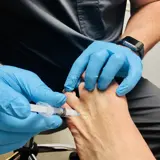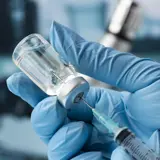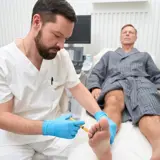This is a type of inflammatory arthritis that causes swelling, pain, and stiffness in your joints (commonly hands and feet). Interestingly, it is more common in females than males and often flares up with age. Cortisone injections are often helpful in managing rheumatoid arthritis because it helps decrease swelling, which helps reduce pain and increase function.
Cortisone is a commonly used steroid injection that helps to reduce inflammation and pain. It has been used for decades to treat chronic or acute inflammatory conditions within the body and joints and has been incredibly effective.
Because of its effectiveness, it has become commonly known as the “miracle drug” because of its incredible usefulness in treating numerous conditions in muscles, ligaments, joints, tendons, and other causes of pain.
What is a Cortisone Injection?
Cortisone is a steroid drug that is commonly used as an anti-inflammatory and injected into painful, stiff areas to help decrease the pain and increase mobility.
The injection has a lot of functions for different areas of the body. Specifically, it is commonly injected into stiff, inflamed, and painful joints. Cortisone injection treatment helps reduce pain and inflammation from arthritis that inhibits the joint’s mobility.
Some of the most common areas for people to get cortisone injections include the ankle, elbow, hip, knee, shoulder, and even smaller joints. Arthritis and pain are common in these small and commonly used joints (fingers and toes), so there are benefits to using cortisone injection treatment for feet and hands.


When Is Cortisone Helpful?
Cortisone injections have been used to effectively treat a lot of issues and pain within the human body. Most commonly, it is used to decrease inflammation and pain.

Cortisone FAQs
Here are some frequently asked questions and the answers to help you decide if cortisone injections are the right path to help you manage your joint and muscle pain. If you have more questions or are looking to get a cortisone injection in the Idaho Falls region, give us a call today!
Get in touch!
Call our office if you have any questions about what we do or to schedule an appointment.
